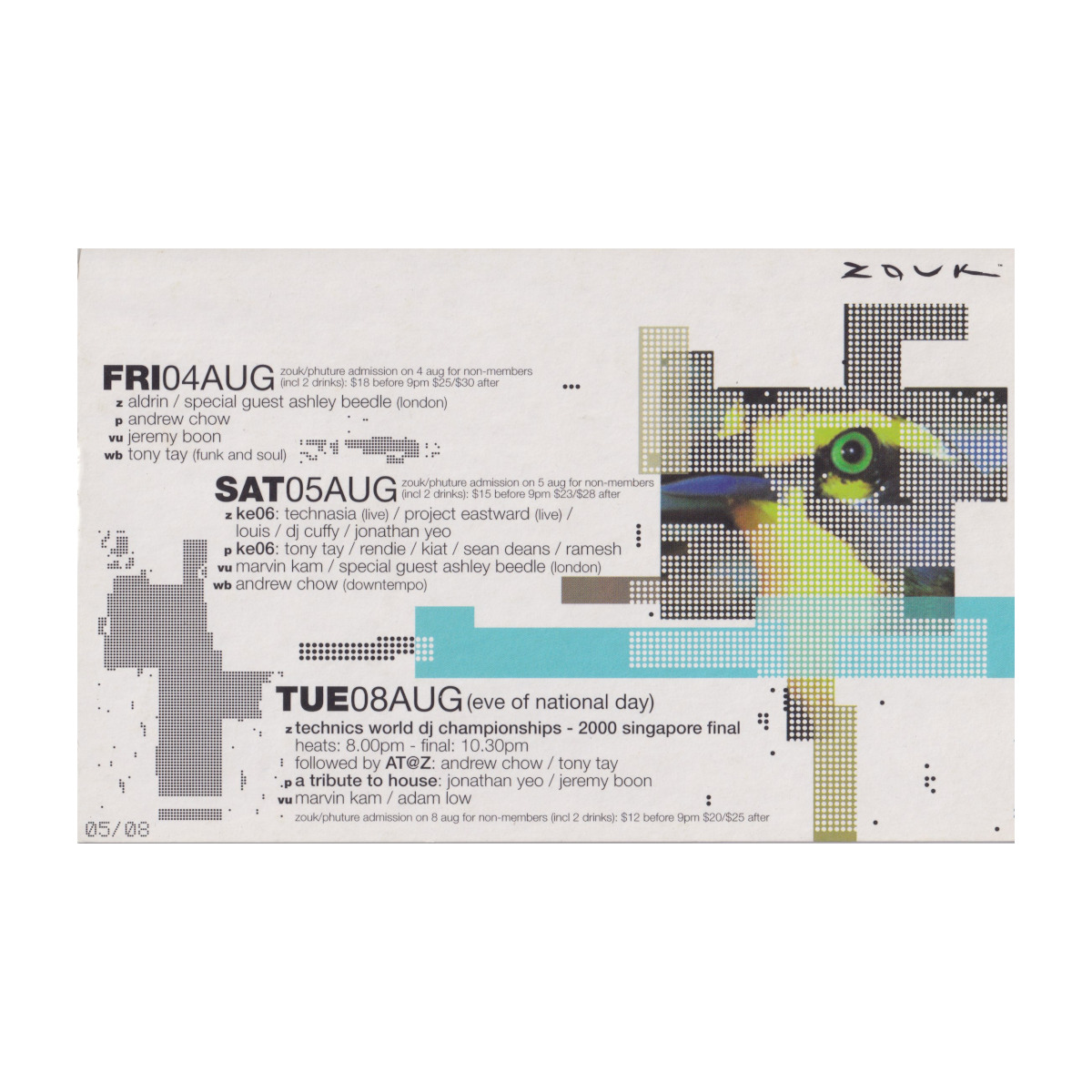
Dance Dance Revolution
The iconic nightclub Zouk introduced House music to Singapore and provided a platform for new visual cultures too.
In 1991, Lincoln Cheng turned three run-down warehouses in Jiak Kim Street into a nightclub based on his travels around Ibiza and other Mediterranean coastal countries. That was the beginning of Zouk, which grew into an icon of Singapore's nightlife scene over the next two decades.
The club is known for introducing house music to Singapore. In the 1990s and 2000s, it also became recognised for its distinctive flyers marketing its line-up and events which were distributed free at the club as well as local shops and cafes. These were designed in-house by the Zouk marketing team that also looked after the club's set design, interior decor, and subsequently, digital collaterals.
The team was managed for over a decade by Tracy Philips (1998–2009) and included designers such as Jasmine Tuan (2000–2005), Jimmy Lee (2001–2006), James Khing (2002–2005), Mriz Sidah (2005–2010), Louis Lam (2007–2008), Pamm Hong (2007–2010), and Wu Jia Wei (2010–2012).
Zouk's flyers had no distinctive look apart from the club's logo. Instead, designers were given the freedom to express the club's ethos, capture the zeitgeist of dance culture or riff off what was in trend. As frequent Zouk-goer, Yeow, summed up in a book commemorating the club's 12th anniversary: "Each Zouk Mailer is a piece of art in itself; self-contained; sometimes on A5, sometimes not. It doesn't matter. Armed with enough text to get you there at the right time, the rest is just a vibe."
References
- Lim, Dawn. "The Zouk Flyer Chronicles". The Design Society Journal: Anew (2013), 76–87.
- Yeow. "Graphic Attack of the Senses: A Retrospective of Zouk's Cutting Edge Mailer Art". Zouk: The Book (2003), 80–83.

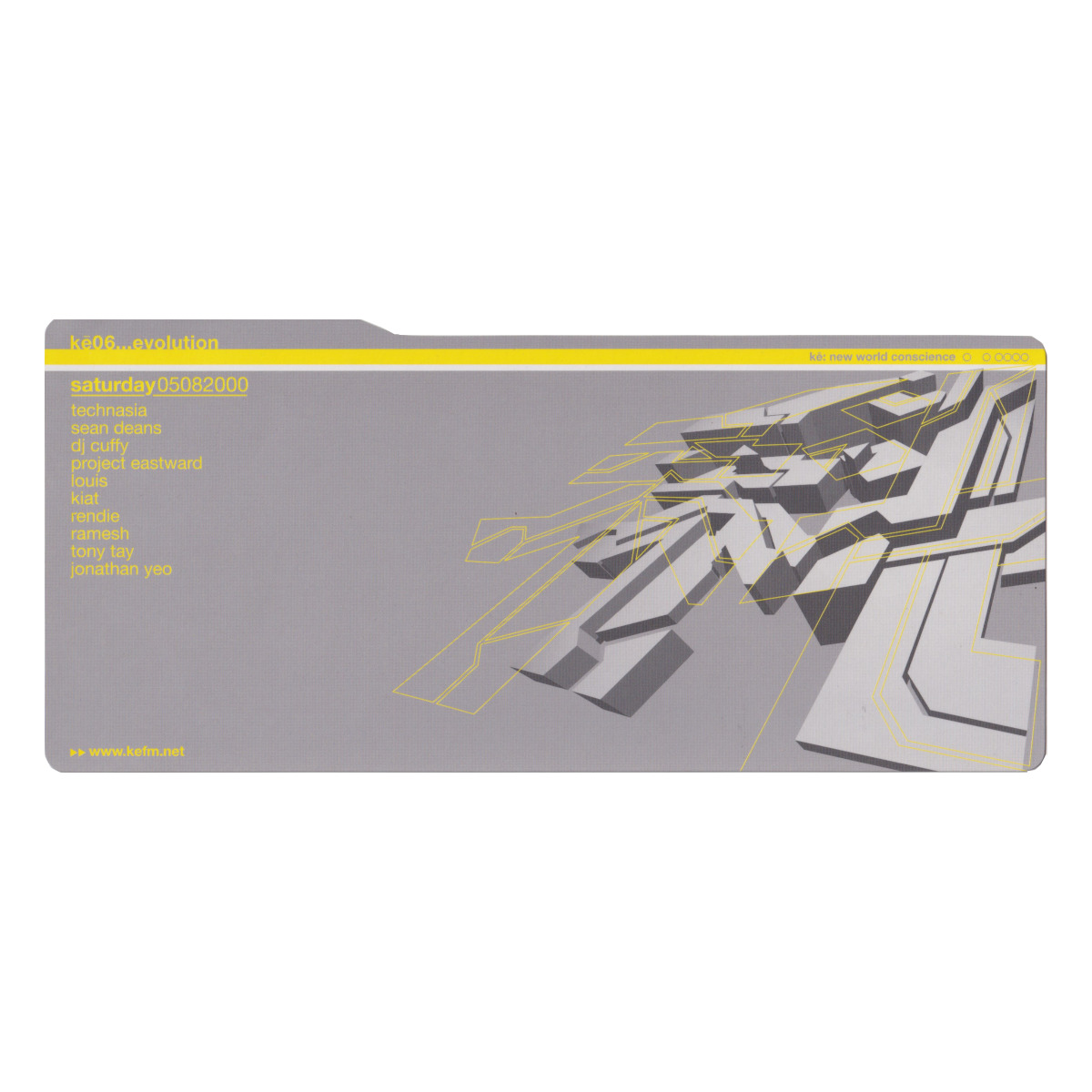
kē06...evolution
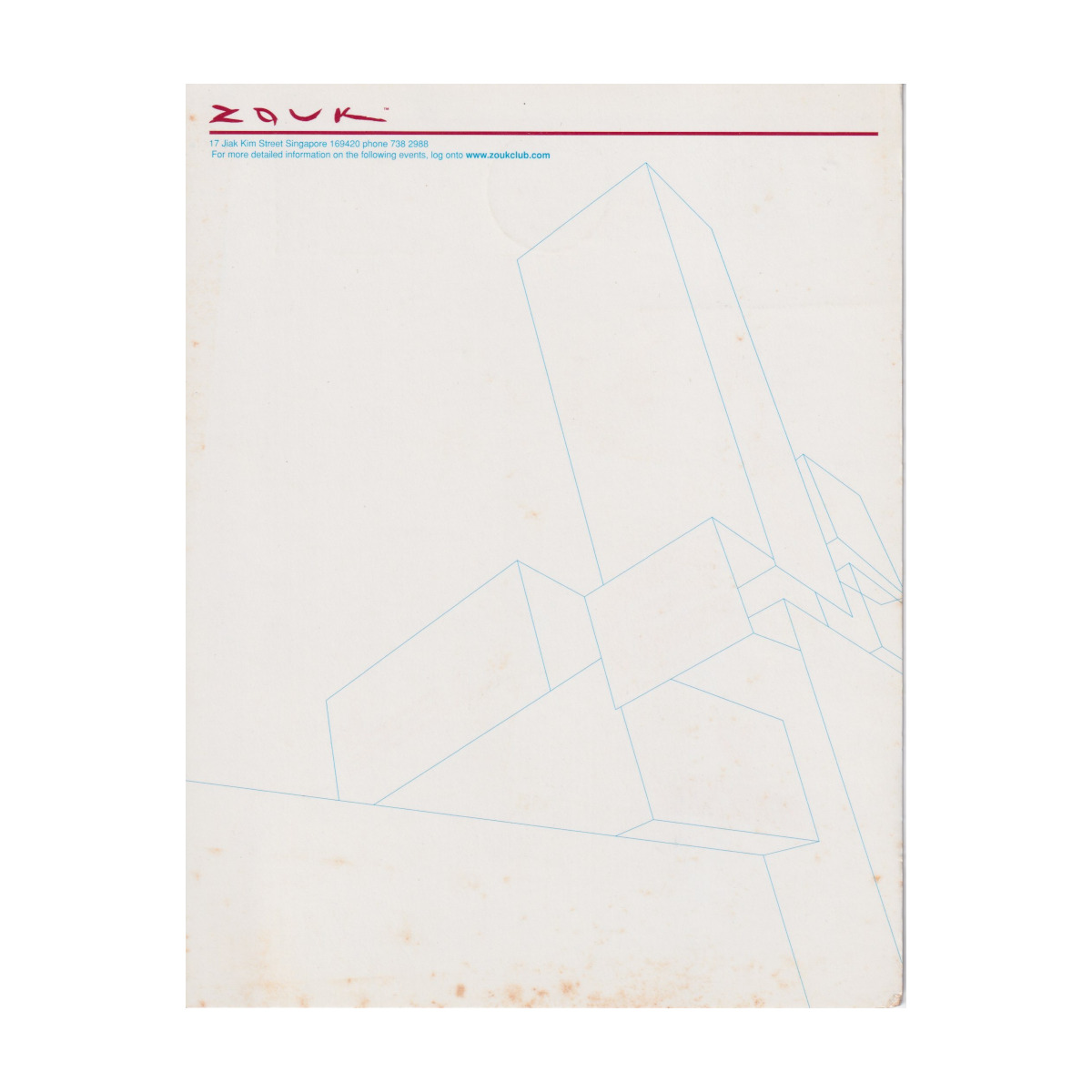
Zouk
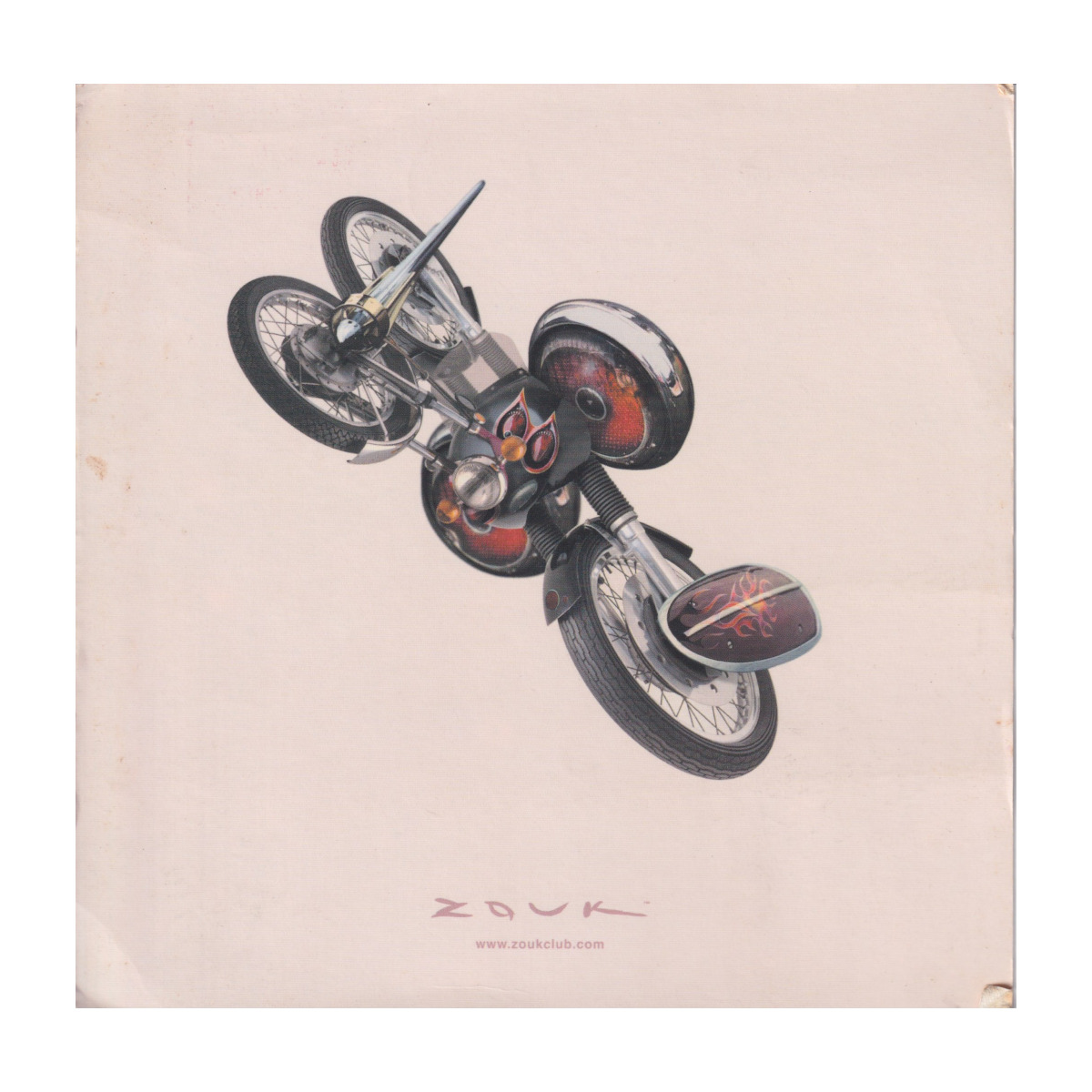
Zouk
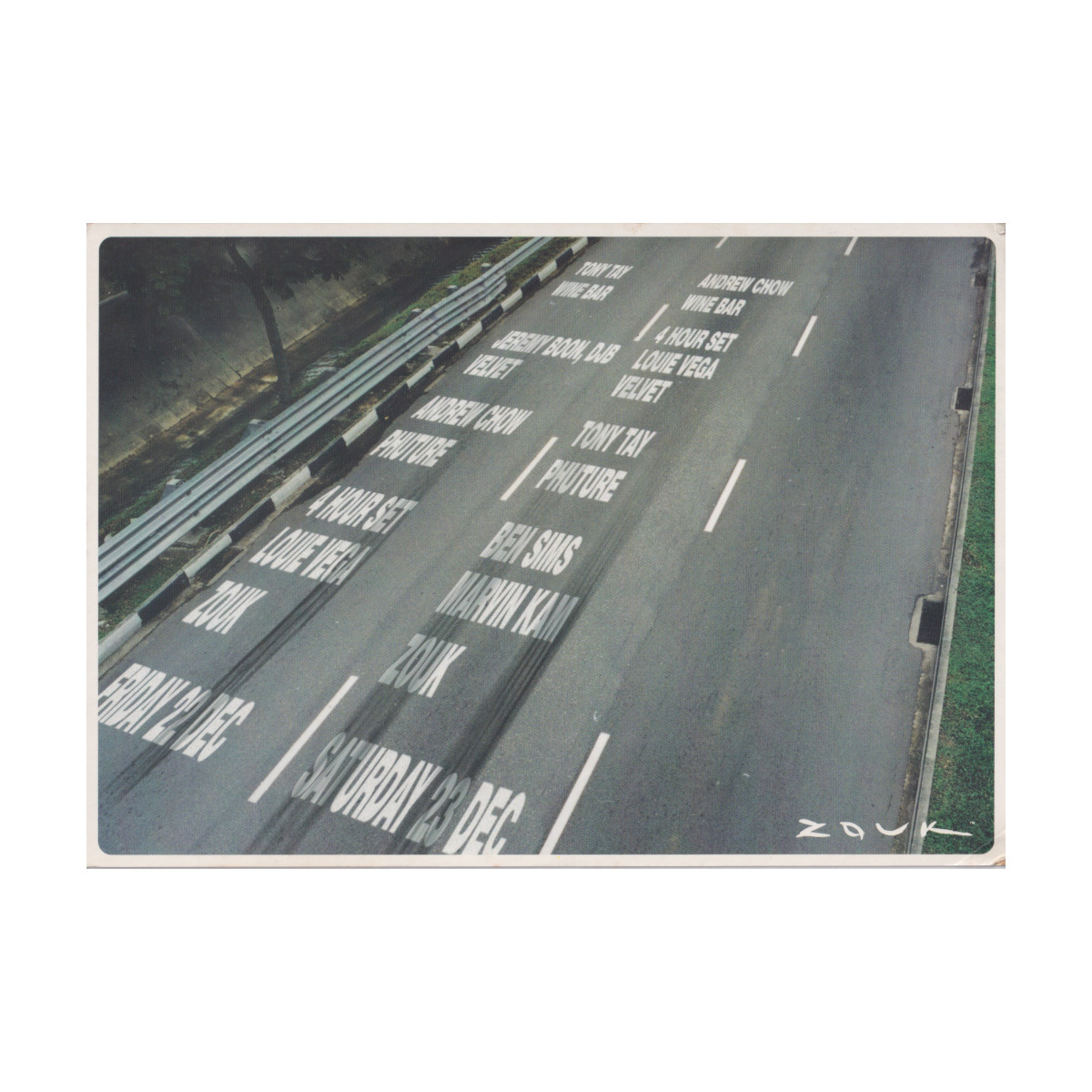
Zouk on the Streets
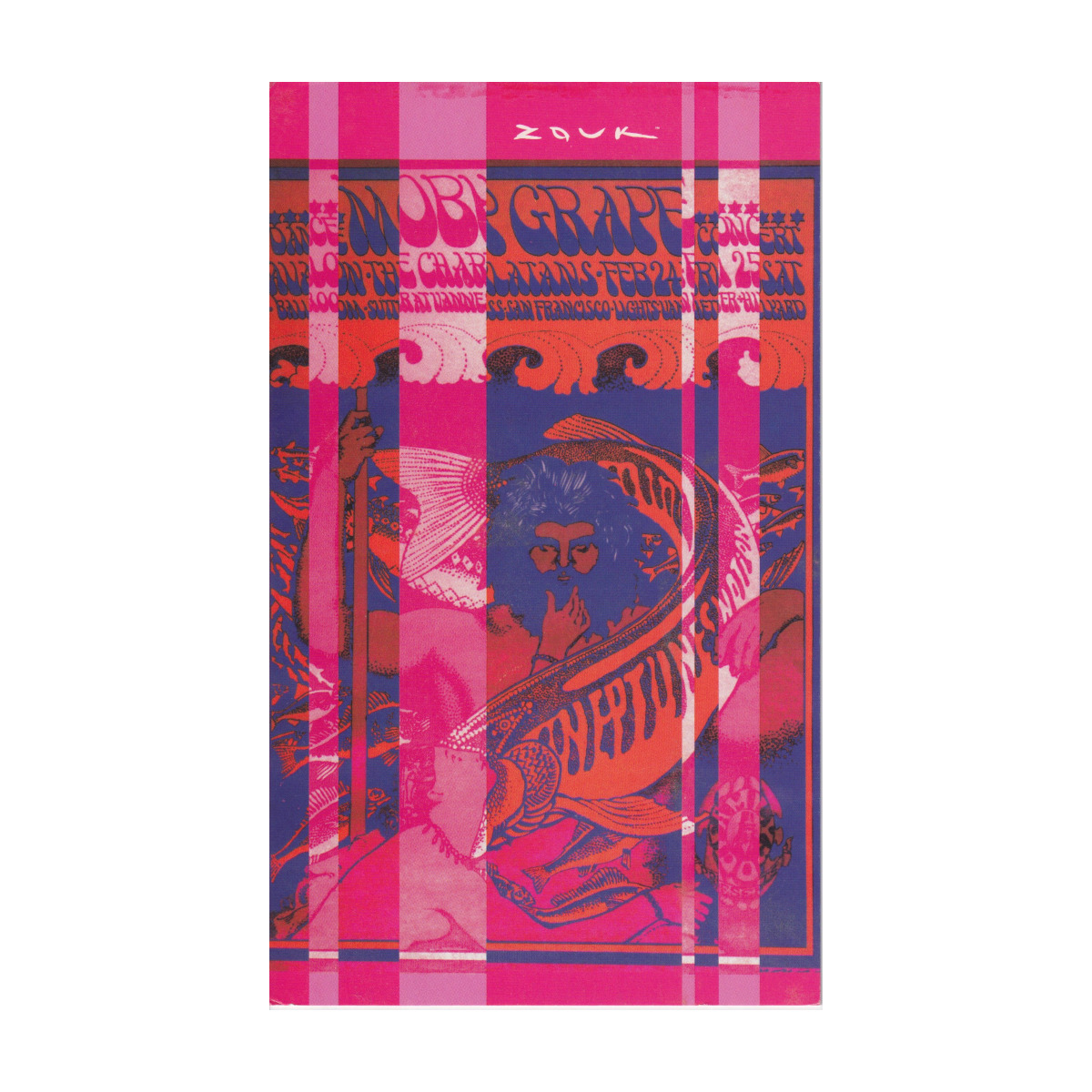
Zouk Art Series

home¹
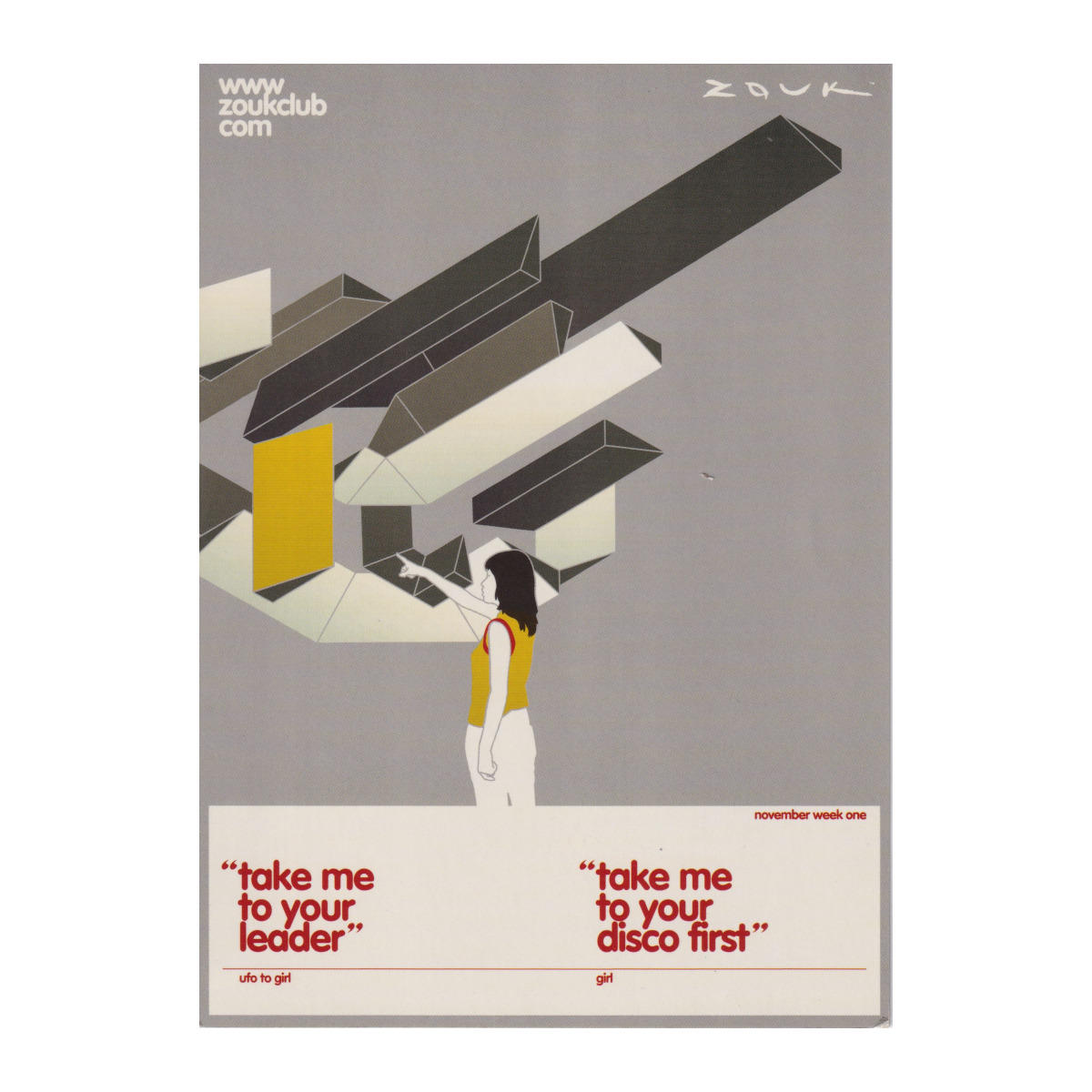
"Take Me to Your Leader"
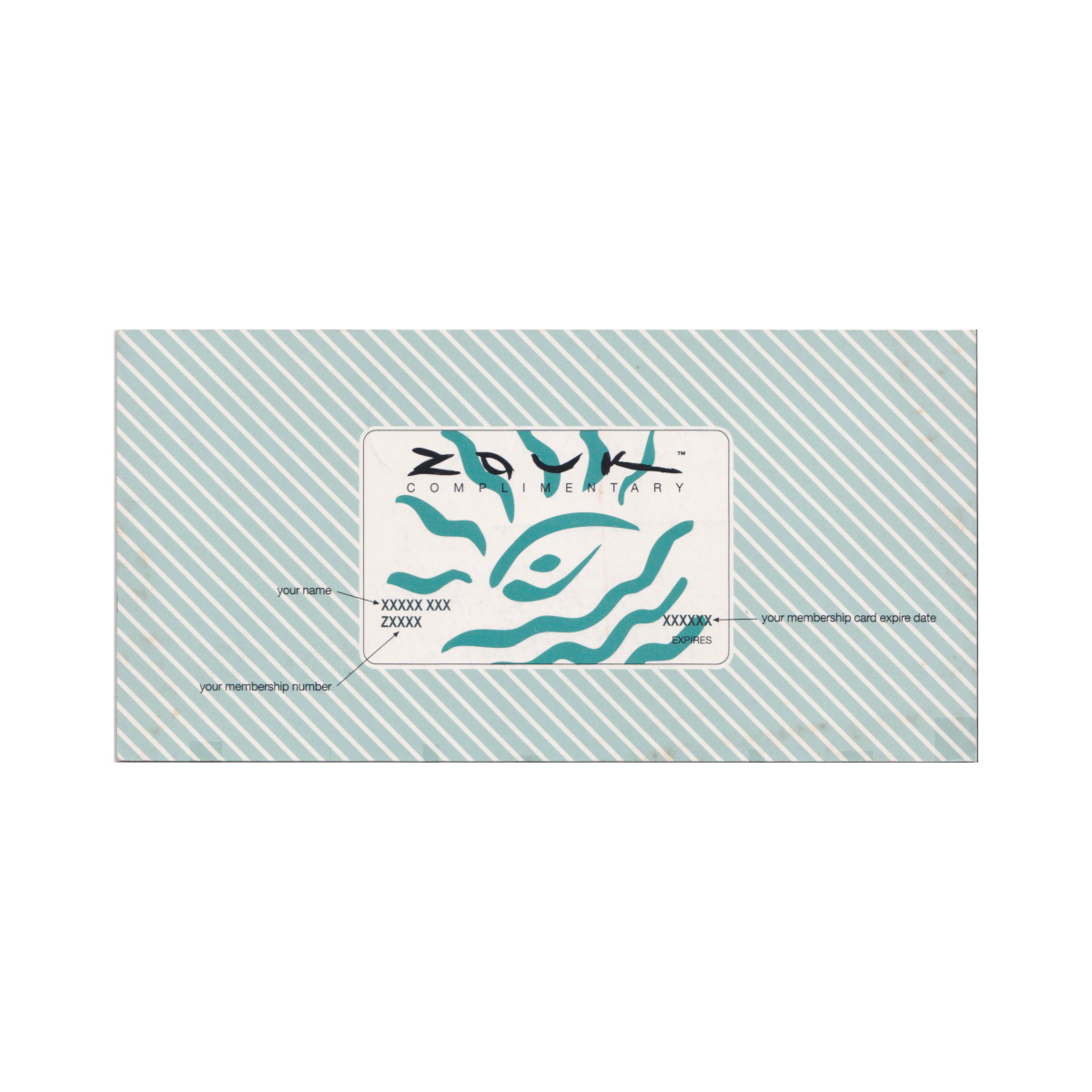
Zouk Complimentary Membership
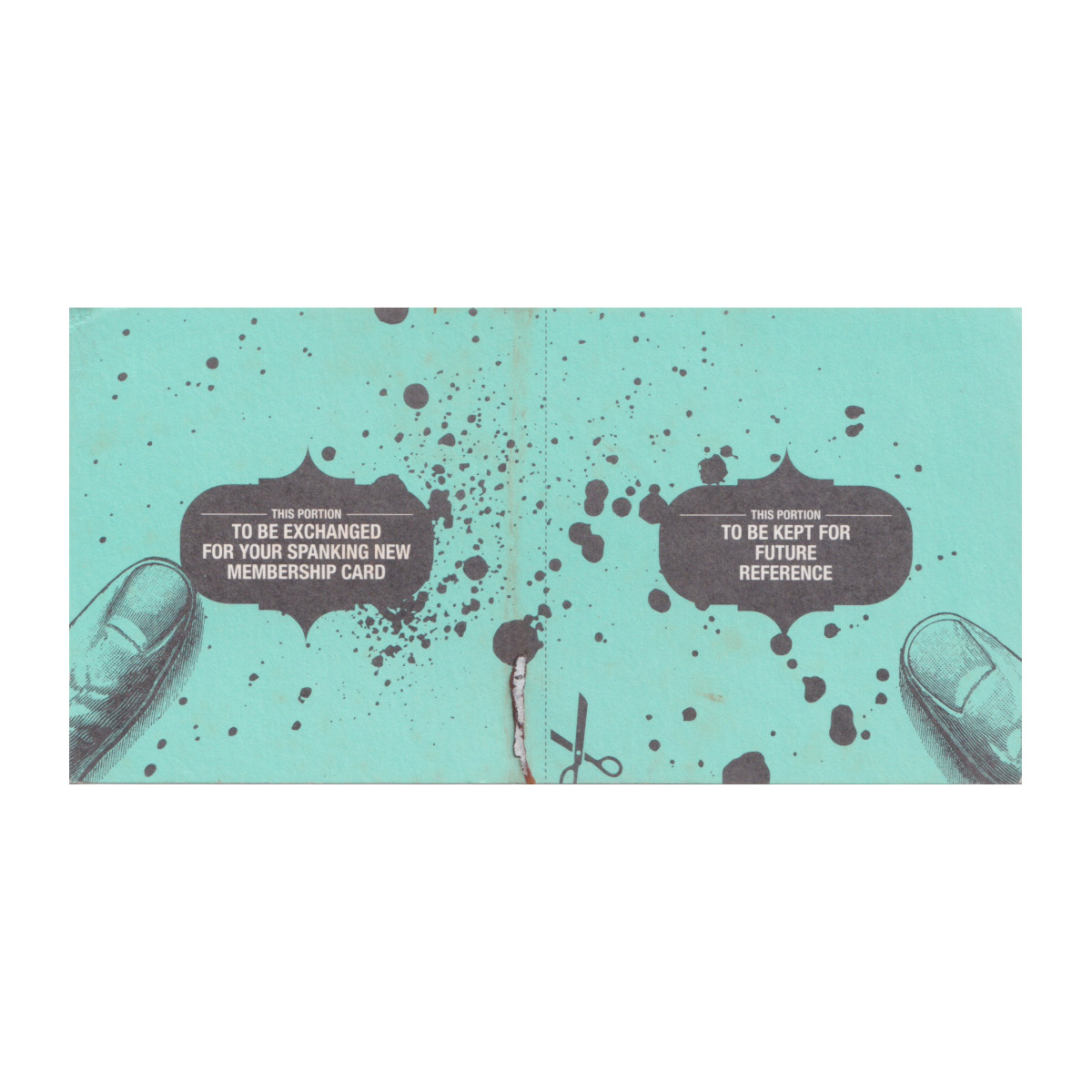
This Portion

Zouk Complimentary Membership
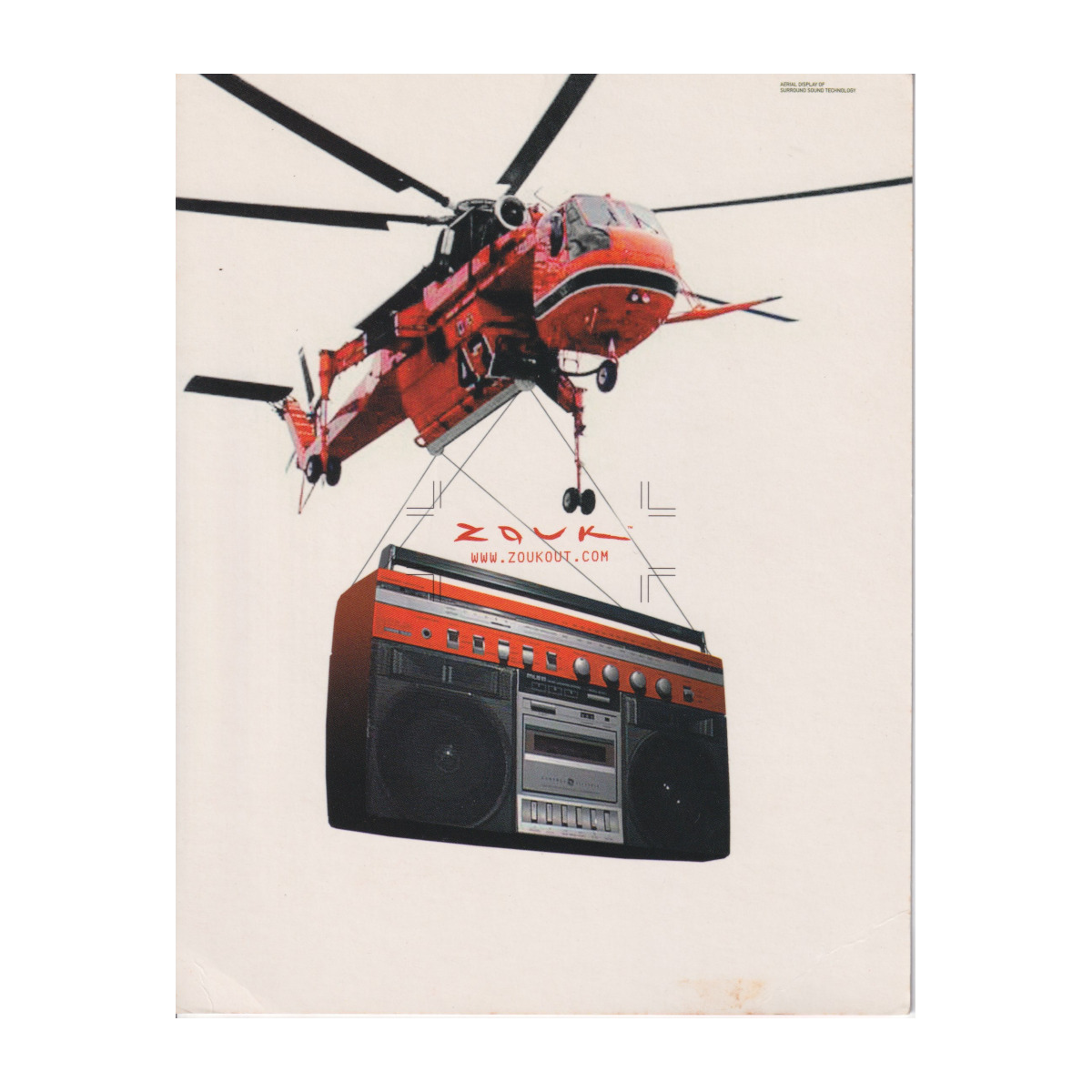
ZoukOut: Aerial Display of Surround Sound Technology
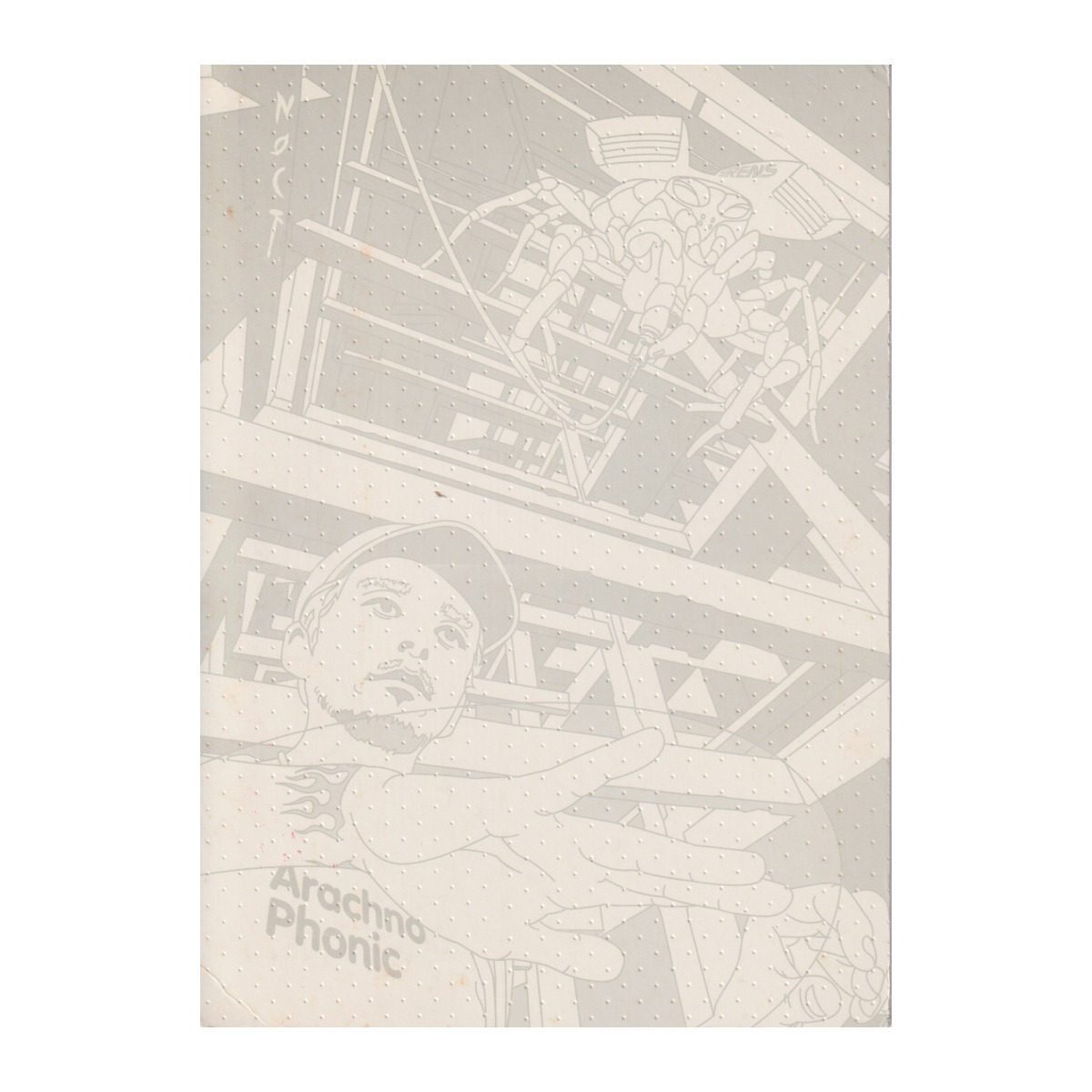
Arachno Phonic

Zouk OCTOBR
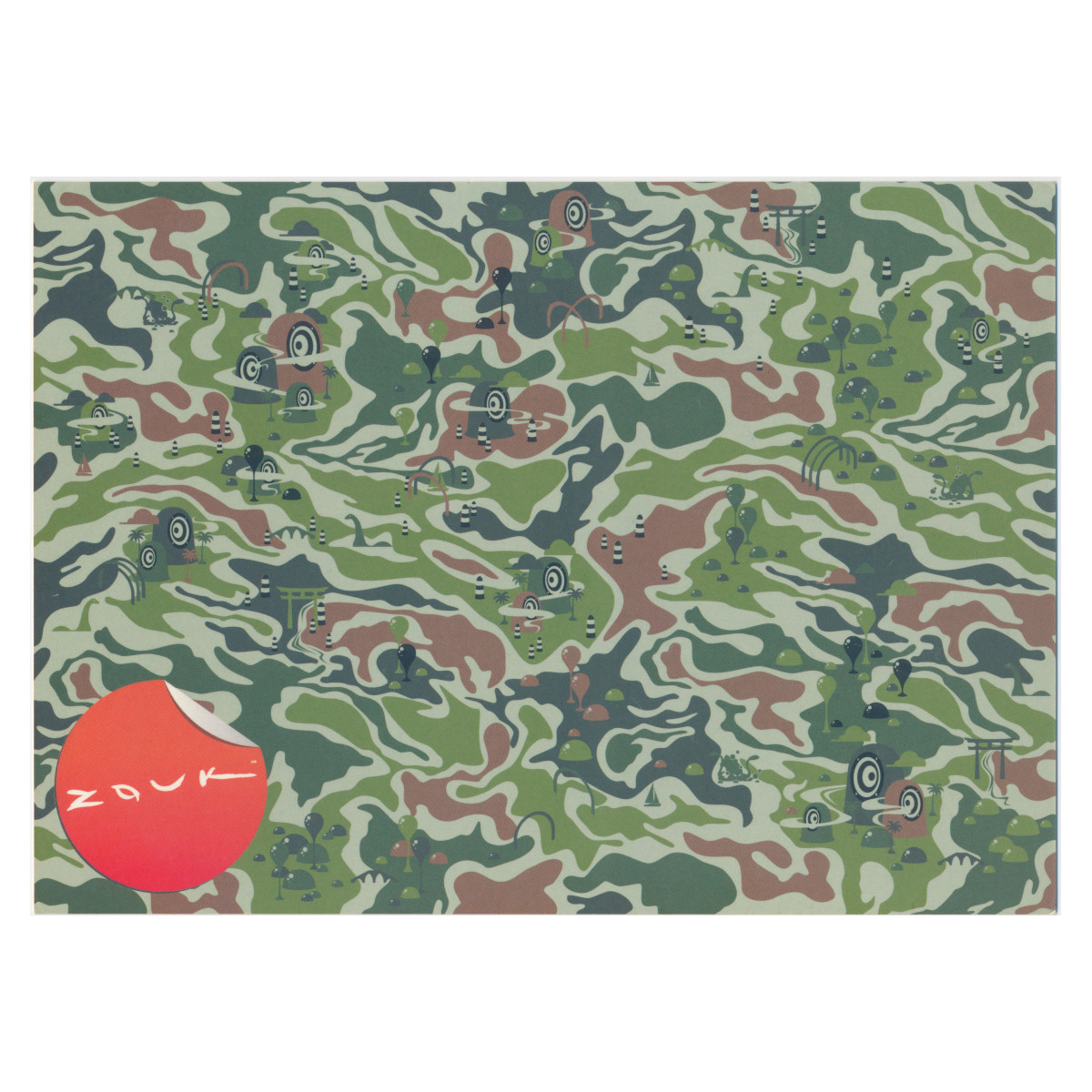
Camofunk
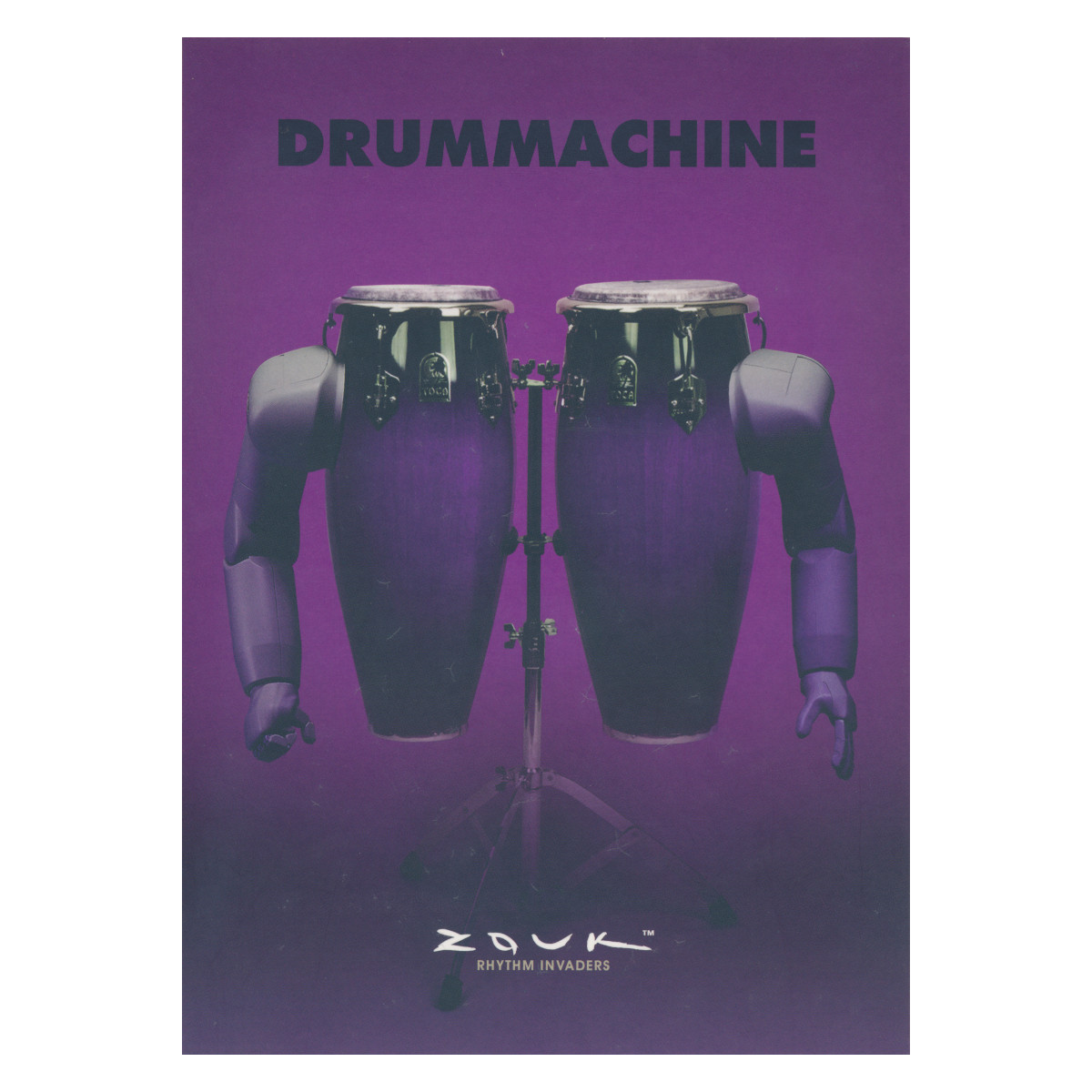
Drummachine
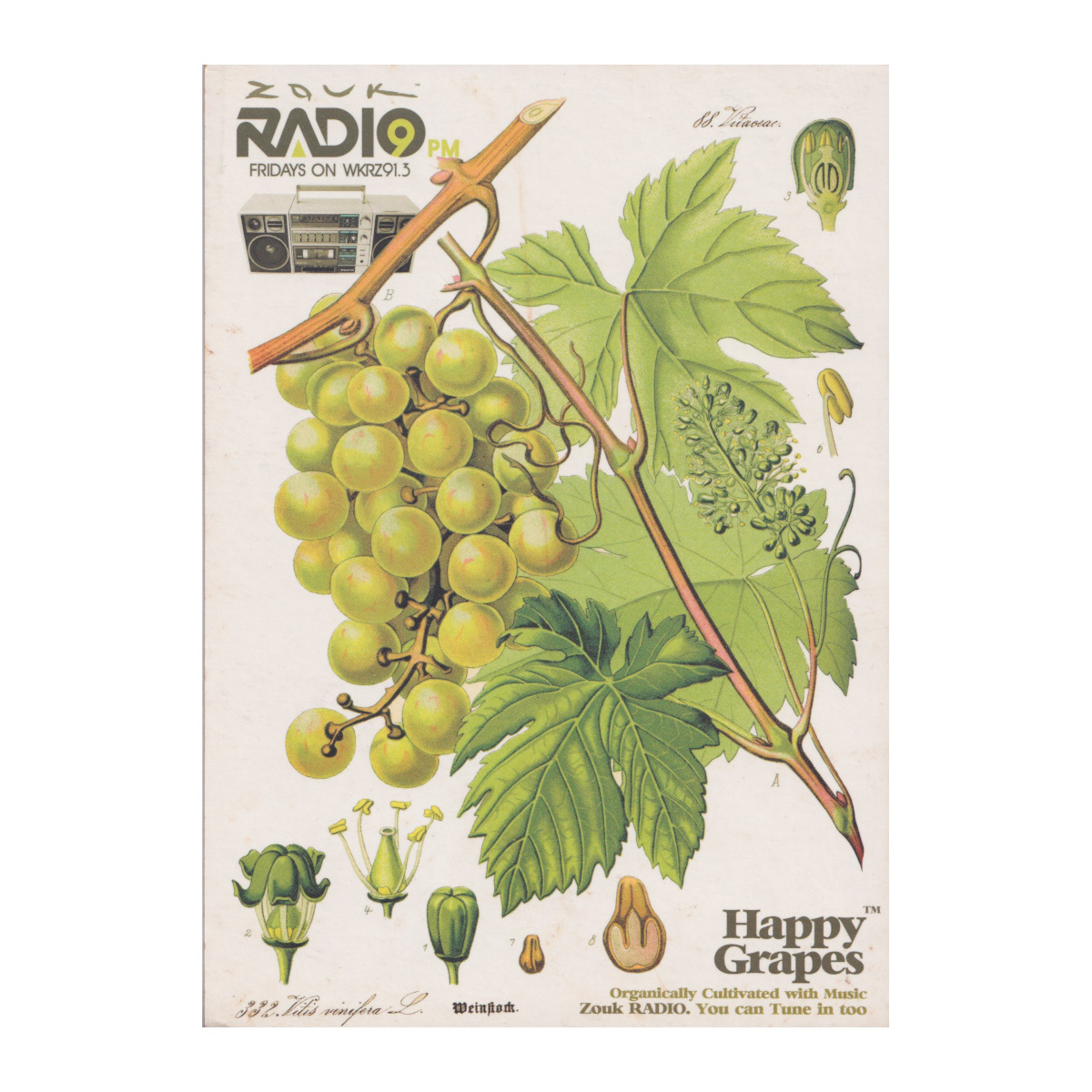
Happy Grapes

Push'a Sound
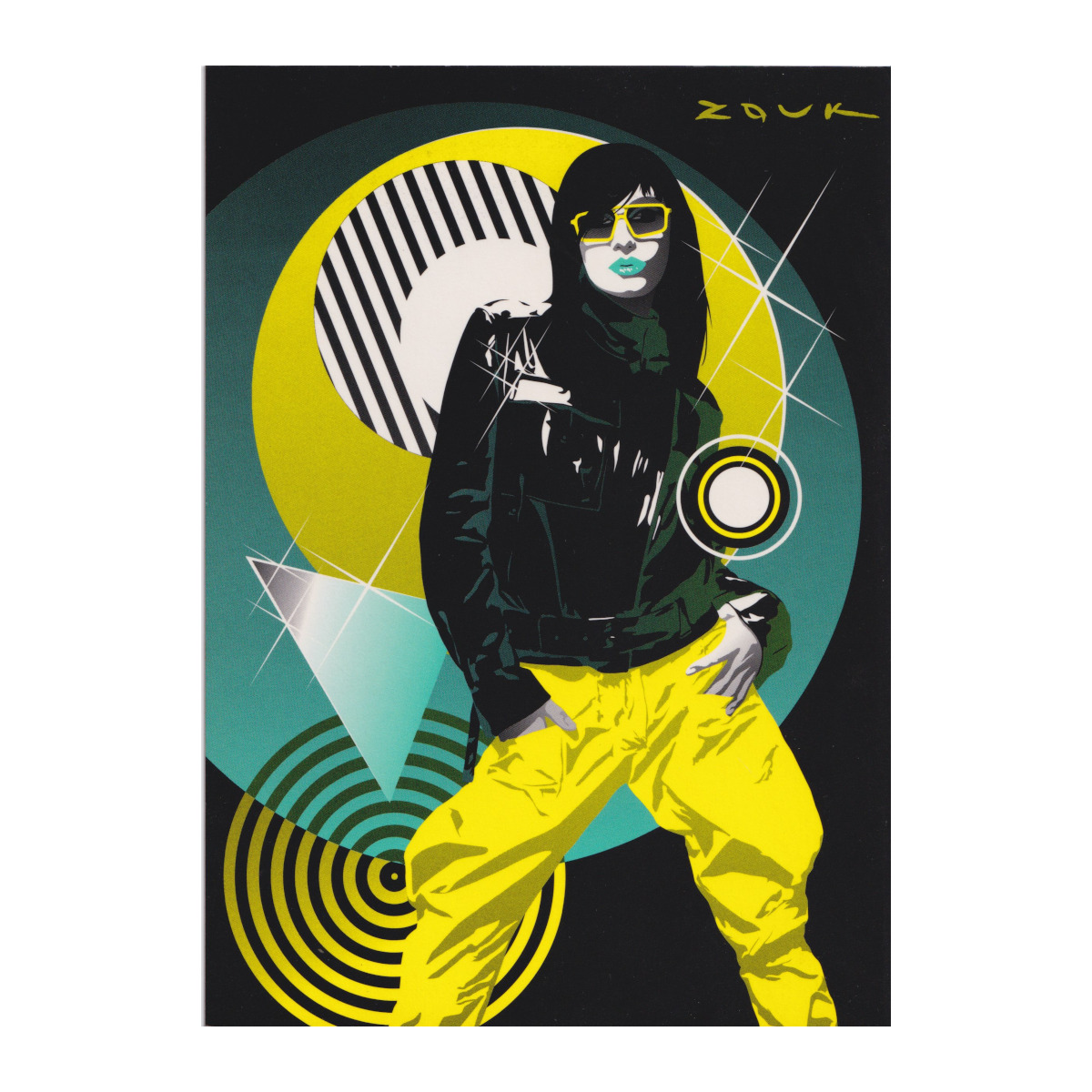
PVC Electric
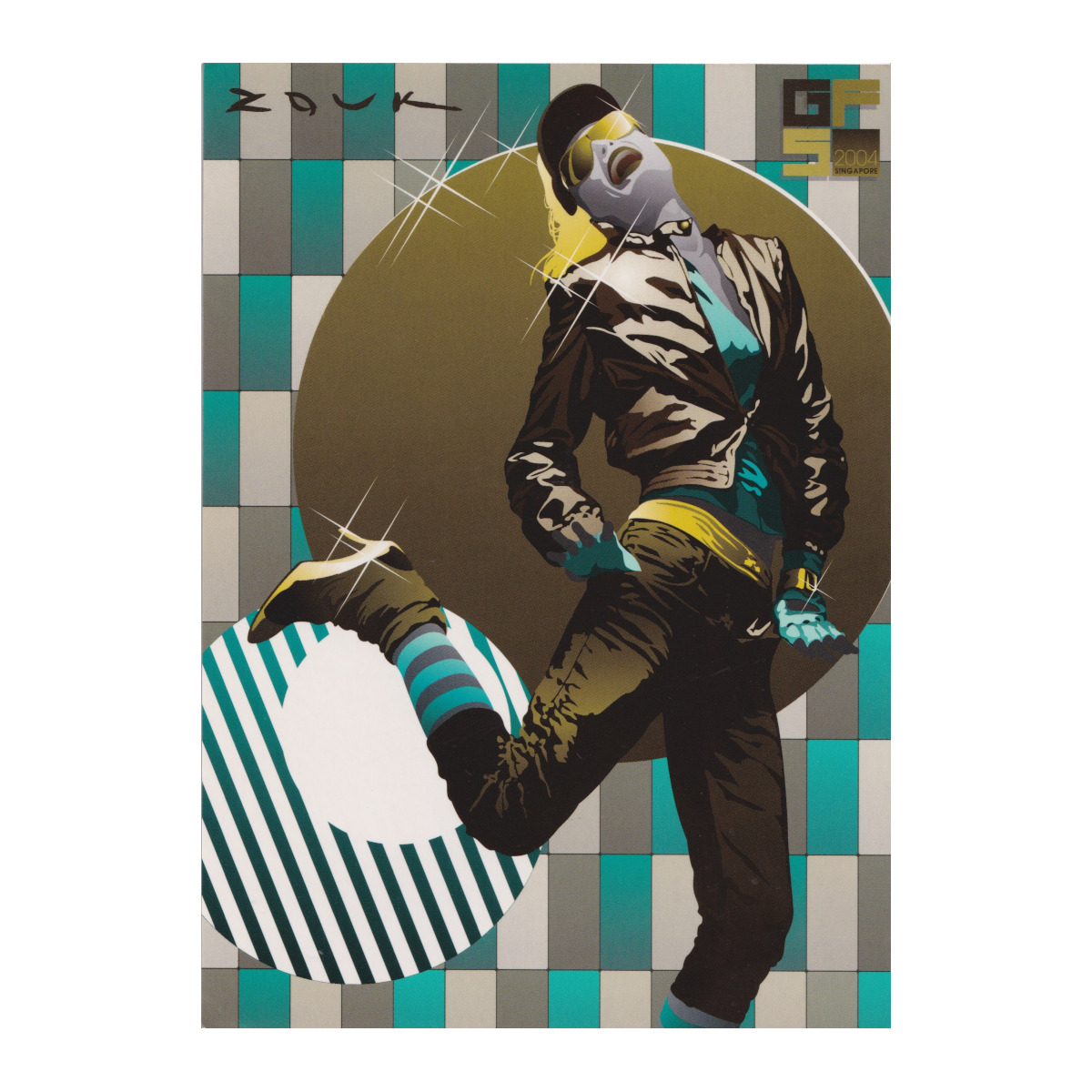
Singapore Graduate Fashion Showcase 2004

your zouk complimentary membership card is ready for collection.
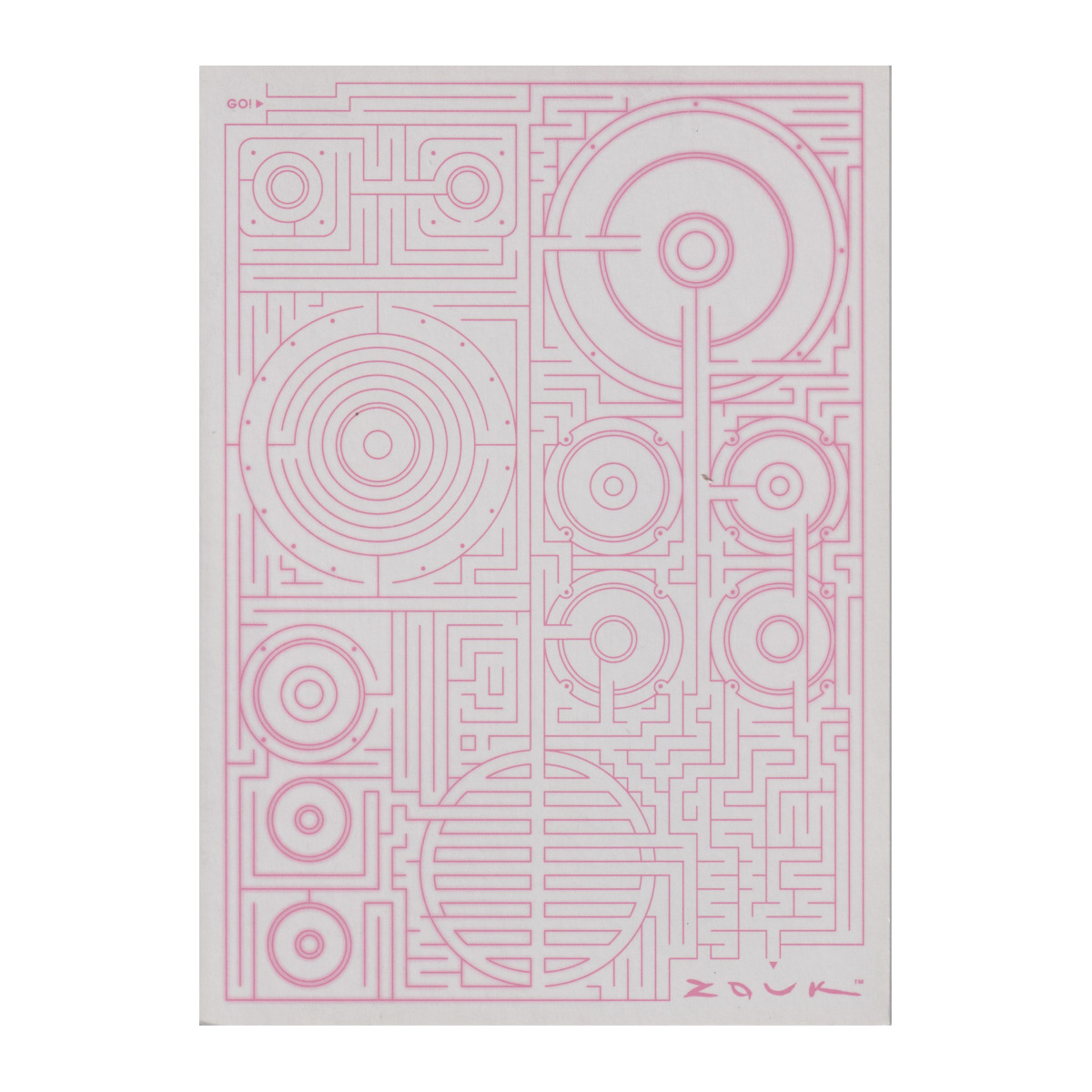
Go

beattraffic

Not at Zouk
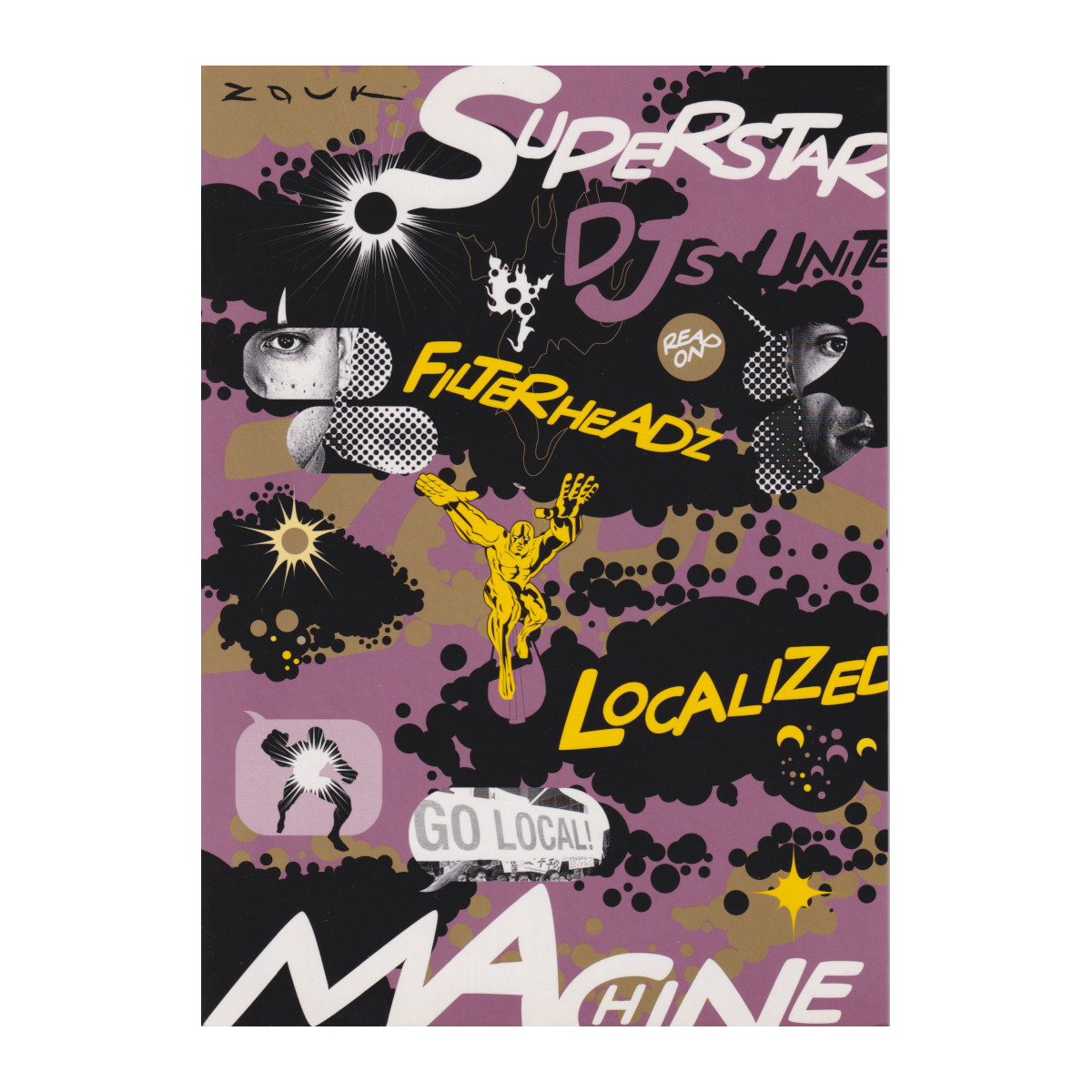
Superstar Machine

Zouk April Fool's 2005
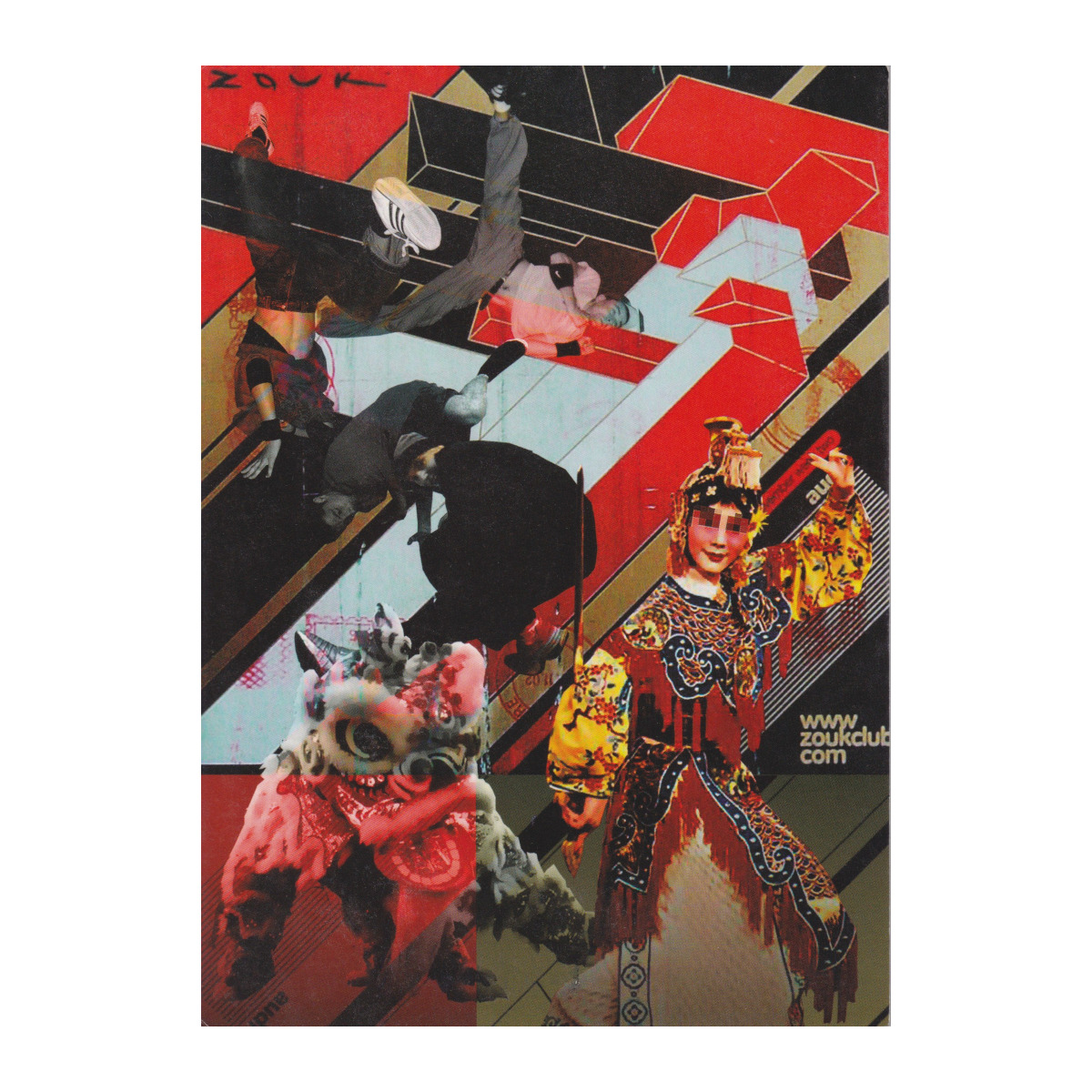
Zouk
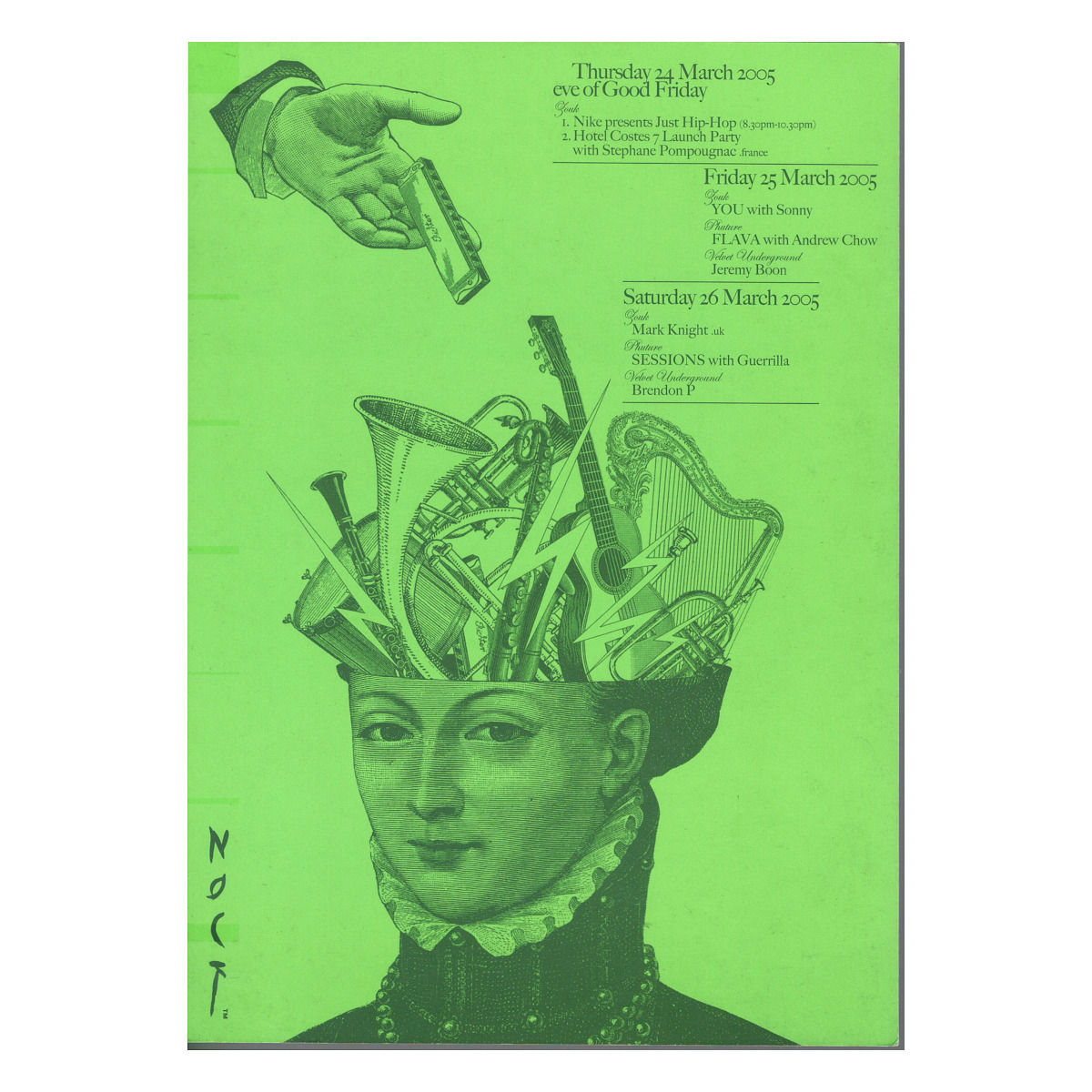
Zouk Good Friday 2005
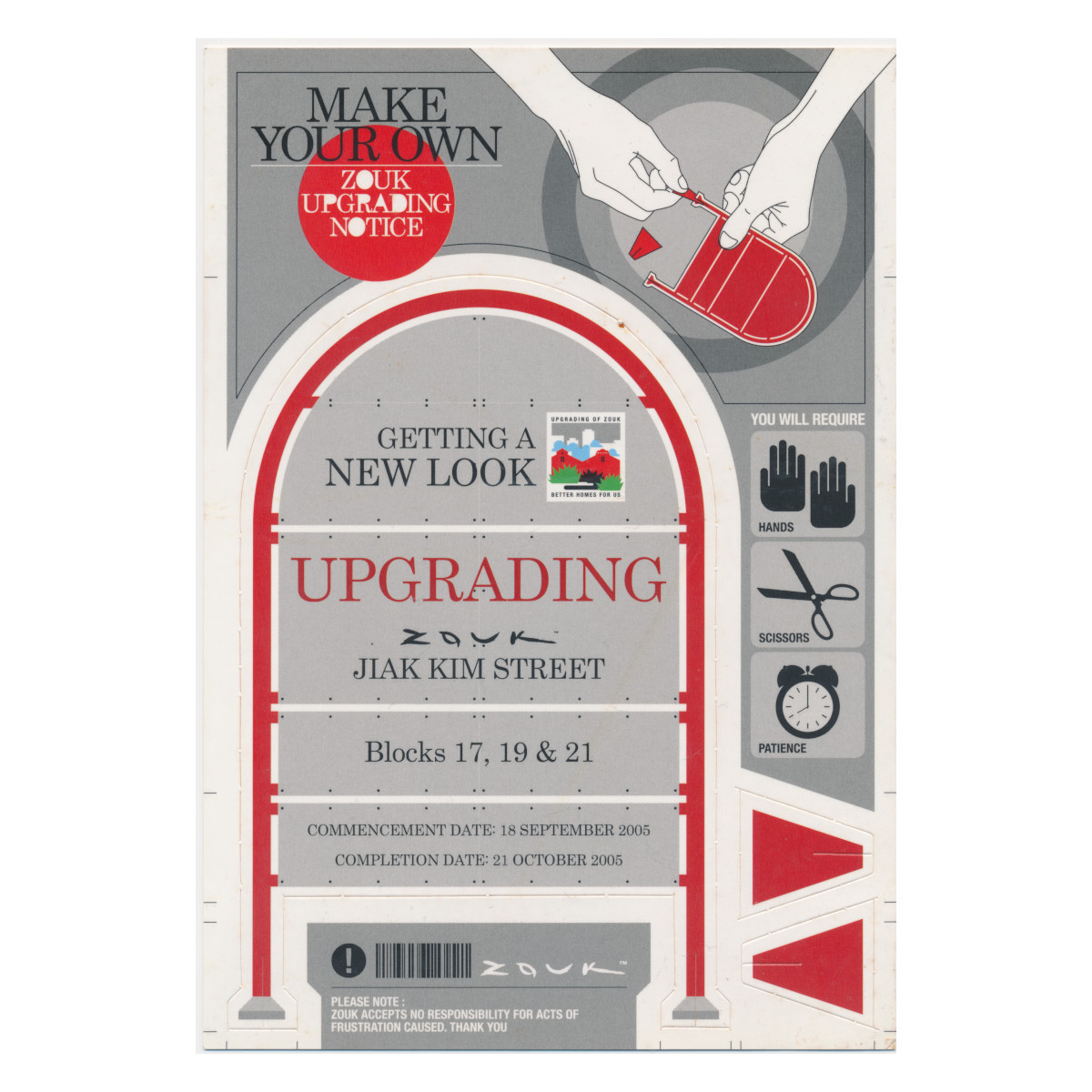
Make Your Own Zouk Upgrading Notice
